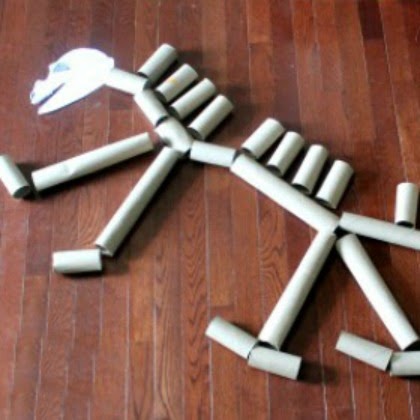What is a fossil? Well, FOSSILS are the remains or traces of plants and animals that lived long ago. They form when layers of the earth build up on top of each other and turn into hard rock. The FOSSIL stays preserved in its shape by the hard rock around it. FOSSILS give scientists clues about the past and help them to study the plants and animals that lived long long ago. Scientists who study fossils are called PALEONTOLOGISTS. PALEONTOLOGISTS look for fossils all over the world and use special tools to remove FOSSILS from the ground. They have to be very careful not to break the FOSSILS.
A Day in the Life of a Paleontologist: See how they find fossils and keep them from breaking: https://thekidshouldseethis.com/post/fossil-hunting-in-unexplored-dinosaur-country
What do Paleontologists do?
There are three main types of fossils – MOLD FOSSIL where you can see the bones, shape, or parts of an animal’s body or plant, TRACE FOSSILS where you see the tracks, footprints, or even poop of an animal, and MUMMIFIED ANIMALS which can help scientists learn about how animals lived.
Learn more about fossils here:
Five ways to make fossils at home
- Go on a mud hunt outside! Remember to bring a container and a shovel with you to scoop up your mud. Once you have enough mud to fill your container about halfway, you can start creating fossils! Trace fossils or body fossils can be made in your muddy container by pressing the object you’d like to make a fossil of into the mud. You can use dinosaur toys or any other toy you are okay with getting a little bit messy. You can also add spoons, shovels, paint brushes, strainers to use as your Paleontologist tools.
- You can use play dough to make great prints as well!
- DIY Fossil recipes with materials that you probably have at home in your kitchen cabinet!
- Make ice fossils by filling a tupperware container with water and food coloring. Add your dinosaurs, shells, or toys and freeze the water overnight. Once your fossils are frozen, take them outside to smash on the sidewalk/driveway or melt them with warm/hot water! Make sure to be careful while melting or smashing.
- Make edible Jello fossils. You’ll need 2 boxes of Jello, a shallow pan (9×9 or 9×13), and plastic dinosaurs or toys that have been cleaned and sanitized well. First you mix the Jello according to the box directions, then pour your mixture into the pan. Add the dinosaurs while the Jello is still wet and let your mixture sit in the fridge overnight. The next day you can use spoons to dig up your dinosaurs or toys and have fun with Jello sensory play.
- Use cut up toilet paper rolls or straws to arrange different styles of fossils on the ground or on a table. Make a dinosaur you already know or design your own type of dinosaur.

Activities
Listen to Curious George’s Dinosaur Discovery:
Do dinosaur yoga using the yoga cards attached
Practice writing words with the Paleontologist word cards attached below. We would suggest printing the cards and encouraging your child to help cut the cards out – a great way to practice scissor skills!
Flip through the Fossils slides to see photos of fossils and paleontologists!
Other videos to learn more about fossils and paleontologists:
